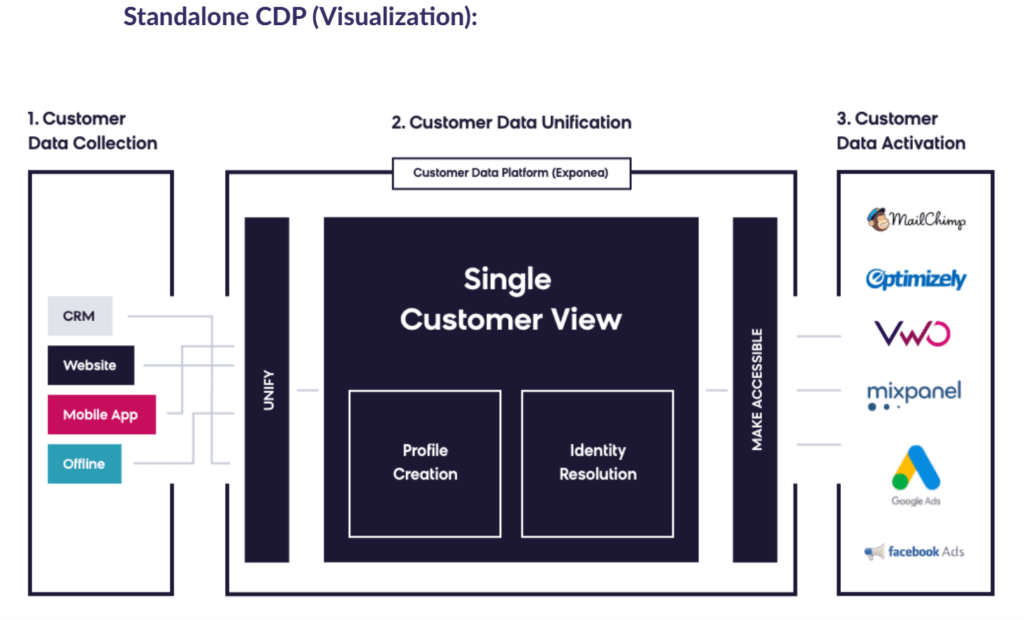Ever since Google announced its plan of phasing out third-party cookies by 2022, the ad tech industry has joined hands to build alternate solutions that are more privacy-focussed and sustainable.
Many interesting trends have come out of this effort, such as an increased focus on first-party data, brand partnerships, and less intrusive models for targeting. Eventually, publishers must come to terms with the impending decline in targeting ability and embrace alternatives.
In this post, we’re going to look at some of the emerging alternatives to third-party cookies and how they can help publishers pivot from this crisis.
Universal IDs
Research has shown that a large set of consumers don’t dislike ads. It’s the privacy breach that they have a problem with. According to a survey by Clutch, 51% consumers prefer like seeing ads from brands they trust.
This proves that it’s not the data collection that is the problem but the way it is being collected. Ultimately, the ability to personalize ads benefits both marketers and consumers. This is where Universal IDs come in.
Universal IDs are shared identities which allow identification across the ad tech supply chain without cookies. Universal IDs follow deterministic matching, resulting in accurate user identification across platforms.
Some of the proposed (or in development stage) Universal ID solutions are:
Project ReArc
On 10th February, 2020, the IAB Tech Lab launched Project ReArc. The project focuses on building a framework for personalization of ads while protecting users’ identity at the same time.
Project ReArc was primarily launched to develop technical standards for a Universal ID that we covered before. According to the IAB, a Universal ID must be developed and put into use in accordance with the following rules:
- Data will never be falsely acquired from consumers and they will always have primary ownership of it
- There should be no possible reverse-engineering in any of the IDs. This requires sufficient encryption
- Publishers and brands should carry out audits to ensure that third-party vendors are not illegally obtaining data and misusing it
- If the above conditions are met, third-party vendors can obtain data
Differential Privacy
Differential privacy is another proposed method for securing user data across platforms. It is a statistical technique that focuses on creating aggregated data sets instead of collecting individual information.
For example, a publisher puts out an ad on their website and 300 users visit the page. But only 98 people click on the ad. This is the only information that the advertiser will receive. With third-party cookies, it was possible to know exactly who clicked the ad. But differential privacy aims to eliminate that kind of deterministic information.
Differential privacy works by injecting noise into data sets, which reduces its accuracy. The exact information of users cannot be extracted and only aggregated information is available. This approach was pioneered by Microsoft but is now being used by tech giants such as Google, Apple, etc.
Data partnerships
Publishers can sell their first-party data to advertisers in a second-party data marketplace. But one of the emerging ways to combat third-party cookie blocking is developing data partnerships between publishers.
Let’s consider an example. Suppose you are a publisher who owns a travel website, producing long-form content about different destinations. If you were to gain first-party data about flight bookings from another publisher, it could be really useful in targeting users. Similarly, your visitors can also serve as a relevant target audience for other websites.
This is how direct data partnerships work and are an easy way for publishers to get hold of premium first-party data.
It’s really accelerated in the last six months. Before that, it was only data-heavy clients who had invested in their own data management platform and cookie pools. Now it’s on most partnerships as a matter of course.
Bedir Aydemir, News UK for Digiday
Contextual Targeting
Contextual targeting has been around forever, but there’s a renewed interest lately. It works showing ads to a user related to the content on the page that they are visiting. So, if a user visits a shoe review website, they might ads from Reebok, Nike or Adidas, that are contextually targeted to the page.
Ad tech experts have been hinting at the resurgence of contextual ads.
That’s the balancing act we’re looking to master. We’re looking to the future, and context is becoming a more important currency. The assumption is that contextual targeting will become increasingly important in a world where user-level data has been reduced.
Ryan Storrar, SVP and Head of Media at Essence for Digiday
Contextual targeting has a downside though, it’s just not as effective as behavioral targeting. However, if this shift were to happen, publisher will want to focus more on refining their content strategy and quality–which always pays off in the way of better engagement and revenue.
As a start, publishers can get in touch with their ad networks and check whether they offer contextual targeting or not. AdSense and Media.net for example, offers contextually targeted ads to publishers.
First-party data platforms
Unlike small and medium-sized publishers, large publishers such as the New York Times have the resources to build their own first-party data platforms. These platforms include ad tech tools, audience data platforms, and others.
Many ad tech tools and technologies have already emerged or are in the process of being built. Here are some large publishers who have either either announced a first-party data related technology or released it:
- Insider Inc’s tool SÁGA: In March, 2020, Insider Inc announced the release of their audience data platform SÁGA. This platform does not use personally identifiable information and yet provides insights that someone would normally gain from PII. SÁGA relies on first-party data only and provides actionable insights to publishers and advertisers.
- Vox Media’s Forte: In December 2019, Vox Media released Forte, an ad-targeting platform for advertisers. This platform helps advertisers reach approximately 125 million people that the Vox audience consists of. Forte has been built on first-party data and was released as an answer to third-party cookie blocking.
Customer Data Platforms
For a long time, publishers have relied on DMPs to organize data. But DMPs usually aggregate third-party data. Now with first-party data becoming more valuable, publishers must invest in customer data platforms.

CDPs create unified user profiles based on a brand’s touchpoints. For example, if a user saw an ad on Instagram, later subscribed through email, and then visited the website, then they created three different touchpoints. CDPs use this information to create privacy-compliant user profiles. This helps publishers gain deeper insights about their website users.
Here are some reasons why publishers must consider investing in a CDP:
- Sole reliance on first-party data
- Privacy-compliance
- Data aggregation in a systematic manner
- Provision of real-time information
- Actionable insights
Newsletters
Publishers have another resource that they can leverage for building a strong audience base: Newsletters. Website content is usually broad but newsletters allow publishers to segment audience with tailored content.
The best part about newsletters is that they fall under first-party data. Users provide their emails of their own accord and can unsubscribe at any point of time.
Newsletters build trust with the audience and allow publishers to establish a relationship. It can also act as a launchpad for a subscription-based model, thus helping publishers diversify their revenue sources.
Conclusion
There is no one-size-fits-all approach to combating third-party cookie blocking. Larger publishers such as New York Times, Atlantic Media, and Washington Post are already pivoting their business to first-party data.
Other publishers, including those in the mid-size category, must also start researching the alternatives that are emerging in lieu of third-party targeting, and start experimenting with what delivers results for them.

Shubham is a digital marketer with rich experience working in the advertisement technology industry. He has vast experience in the programmatic industry, driving business strategy and scaling functions including but not limited to growth and marketing, Operations, process optimization, and Sales.







